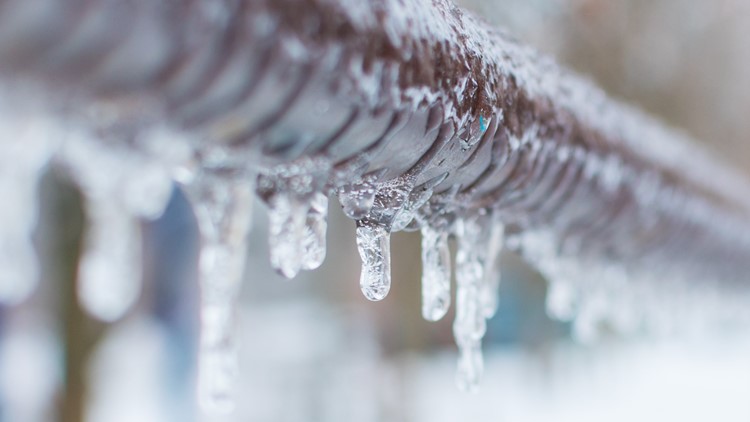Preventing Frozen Pipes in Cold Weather: Key Tips
Preventing Frozen Pipes in Cold Weather: Key Tips
Blog Article
How do you really feel in relation to How to prepare your home plumbing for winter weather?

Cold weather can ruin your pipes, especially by freezing pipes. Below's how to prevent it from happening and what to do if it does.
Introduction
As temperatures drop, the danger of frozen pipelines rises, possibly bring about expensive fixings and water damages. Understanding how to stop frozen pipes is crucial for house owners in chilly environments.
Avoidance Tips
Insulating susceptible pipelines
Wrap pipes in insulation sleeves or utilize heat tape to secure them from freezing temperatures. Focus on pipes in unheated or external locations of the home.
Home heating strategies
Keep indoor areas adequately heated, specifically locations with pipes. Open cabinet doors to allow cozy air to distribute around pipelines under sinks.
How to determine icy pipes
Search for lowered water circulation from faucets, uncommon odors or sounds from pipes, and visible frost on revealed pipes.
Long-Term Solutions
Architectural changes
Think about rerouting pipelines away from outside walls or unheated locations. Add additional insulation to attic rooms, cellars, and crawl spaces.
Upgrading insulation
Purchase top quality insulation for pipes, attic rooms, and walls. Proper insulation helps keep constant temperatures and lowers the danger of frozen pipelines.
Securing Outdoor Pipes
Garden tubes and outside taps
Disconnect and drain pipes garden pipes before wintertime. Install frost-proof faucets or cover outside faucets with protected caps.
Recognizing Frozen Pipes
What causes pipes to freeze?
Pipelines freeze when exposed to temperatures below 32 ° F (0 ° C) for prolonged periods. As water inside the pipes ices up, it increases, taxing the pipeline wall surfaces and possibly triggering them to break.
Threats and problems
Frozen pipelines can result in water supply disturbances, residential or commercial property damage, and costly repairs. Burst pipes can flood homes and cause extensive architectural damages.
Indications of Frozen Water Lines
Determining frozen pipes early can stop them from rupturing.
What to Do If Your Pipes Freeze
Immediate activities to take
If you presume frozen pipes, maintain taps open up to eliminate pressure as the ice thaws. Utilize a hairdryer or towels soaked in warm water to thaw pipelines slowly.
Conclusion
Preventing icy pipes needs proactive procedures and quick actions. By understanding the reasons, indications, and safety nets, property owners can shield their plumbing throughout cold weather.
6 Proven Ways to Prevent Frozen Pipes and Protect Your Home
Disconnect and Drain Garden Hoses
Before winter arrives, start by disconnecting your garden hoses and draining any remaining water. Close the shut-off valves that supply outdoor hose bibs and leave the outdoor faucet open to allow any residual water to drain. For extra protection, consider using faucet covers throughout the colder months. It’s also important to drain water from any sprinkler supply lines following the manufacturer’s directions.
Insulate Exposed Pipes
Insulating your pipes is an effective way to prevent freezing. Pipe insulation is readily available at home improvement stores and is relatively inexpensive. Pay close attention to pipes in unheated areas such as the attic, basement, crawl spaces, or garage. Apply foam insulation generously to create a buffer against the cold. You can also wrap your pipes in heat tape or thermostat-controlled heat cables for added warmth.
Seal Air Leaks
Inspect your home for any cracks or openings that could let in cold air. Seal any holes around the piping in interior or exterior walls, as well as the sill plates where your home rests on its foundation. Additionally, make sure to keep your garage door closed unless you’re entering or exiting. Leaving it open creates a significant air leak that can lead to frozen pipes.
Allow Warm Air Circulation
During cold snaps, it’s essential to allow warm air to circulate evenly throughout your home. Leave interior doors ajar to promote better airflow. Open kitchen and bathroom cabinets to help distribute heat consistently around the rooms. If you have small children or pets, be sure to remove any household chemicals or potentially harmful cleaners from open cabinets for safety.
Let Faucets Drip
A small trickle of water can make a big difference in preventing ice formation inside your pipes. When temperatures drop significantly, start a drip of water from all faucets served by exposed pipes. This continuous flow helps prevent the water from freezing. Additionally, running a few faucets slightly can relieve pressure inside the pipes, reducing the chances of a rupture if the water inside does freeze.
https://choateshvac.com/6-proven-ways-to-prevent-frozen-pipes-and-protect-your-home/

We are very excited about Preventing and dealing with frozen pipes and I hope you appreciated our article. Enjoyed our piece of writing? Please quickly share it. Let others locate it. Thanks for taking the time to read it.
Browse Our Site Report this page